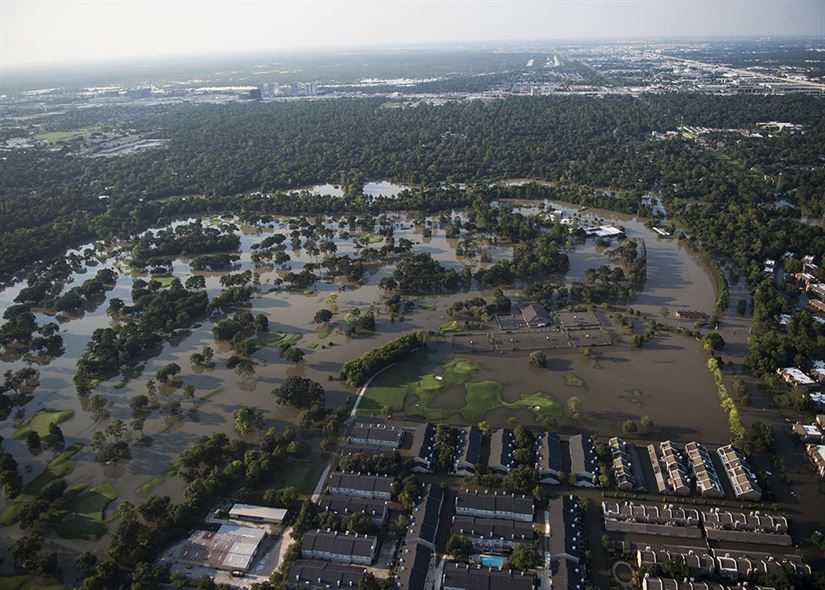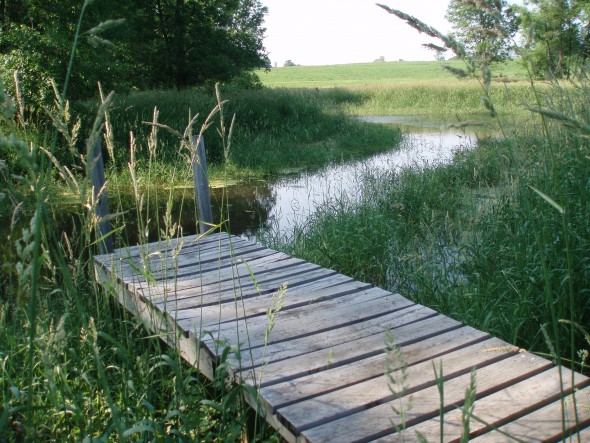Lessons of Hurricanes Harvey and Irma
Concrete infrastructure has limitations. Only sustainable green solutions can solve future flooding.
Hurricanes Harvey and Irma should be wakeup calls for all of us in Milwaukee. We are blessed to be next to Lake Michigan and blessed to have made substantial improvements to our water infrastructure over the years to keep us safe. Unfortunately, there will be more devastating storms in the future and, the truth is, we cannot build traditional infrastructure large enough to withstand these massive flooding events. It is cost prohibitive and, in the end, futile, because there will always be a larger storm on the horizon.
We should see the outcomes of these hurricanes and refocus our infrastructure priorities with new approaches that not only strengthen our traditional water infrastructure backbone, but also supplement that skeleton with resilient, sustainable, cost effective, and natural solutions that will reduce the impacts of storms like Harvey and Irma.
To make this happen, a mix of projects from the present and the past are being employed.
In 1926, MMSD began treating the City’s wastewater by not only providing cleaner water for the environment, but also by creating an organic nitrogen fertilizer, Milorganite®, to enhance soil health. Using the biosolid byproduct of the wastewater treatment process to produce Milorganite® also provides needed revenue to offset the costs to the public. Over 90 years later, Milorganite® is still a sustainable approach that is revitalizing the Great Lakes and helping to create food.
Building off this sustainable foundation, in the 1980’s, MMSD expanded the capacity of its water reclamation facilities by building a deep tunnel to help manage combined sewer overflows (CSO’s) and to eliminate sanitary sewer overflows. Expanded twice since, this tunnel system has helped reduce CSO’s from an average of 50 per year to an average of just over two per year. Since 1994, MMSD has captured and cleaned 98.4% of all the water that has found its way into the regional sewer system.
The amazing performance of the deep tunnel system has resulted in water quality improvements in the region’s rivers and has facilitated the natural revitalization of the rivers. No longer do the rivers stink or are they trash laden. Condos, restaurants, and bars now line this river amenity. In the 1990’s, the City of Milwaukee spurred this development effort along with the construction of a River Walk. This system of walkways has created enhanced access to the waterways for people from all over the region to enjoy our rivers.
In the late 1990’s, MMSD realized that it needed to also provide flood management along the rivers to protect those who lived near the rivers and to further foster economic development. Prior improvements had straightened and lined the rivers with concrete. MMSD initiated a multiyear approach that reversed this approach and restored the rivers to a more natural appearance by reintroducing meanders and habitat as part of the flood management program. While not yet complete, the results are profound. Fish have returned and have begun to spawn, and the neighborhoods are embracing the quality of life improvements that the new open spaces have generated.
A cornerstone to MMSD’s flood management program is the preservation of open space through its Greenseams® Program. Greenseams® is a land acquisition program that identifies and preserves open spaces for flood mitigation, water quality improvements, and habitat restoration. Once acquired by MMSD, this land is turned over to land trusts and municipalities with a conservation easement placed on it. These entities then manage the land and incorporate it into passive recreational programs. Habitat returns, and these natural open spaces act as sponges and help to absorb water before it floods downstream neighbors.
As these other efforts were completed or are ongoing, MMSD realized that, to get ahead of the water drops, it needed to manage water where it falls with green infrastructure. Today, green roofs, bioswales, rain barrels, porous pavement, and rain gardens are sprouting up throughout the Milwaukee region. The green infrastructure program has taken the regionwide revitalization efforts and brought them down to the individual’s front yard. This personalization of infrastructure puts water front and center on many discussions and helps to inform and teach the residents of the importance of good water stewardship. The transformation continues today every time a rain barrel or rain garden is installed.
What we can do is make sure that our infrastructure – all infrastructure – is resilient and can respond quickly to minimize the impacts to our public. We need to change the way we develop our cities. We cannot build our way out of events like Hurricane Harvey; however, if we remove homes and businesses from the floodplain, preserve open space in low areas, take steps to reduce impervious cover, manage some water where it falls, and try to work with nature, we can reduce the storms’ long-term impacts. These newer approaches complement a very robust grey infrastructure that includes flood management projects, the tunnel, sewers, and our water reclamation facilities.
In the end, proper management of water through land use planning and holistic approaches will help us revitalize region and reduce the impacts of future storms on our residents. It is all about water! We just need to connect the drops.
Kevin Shafer is the executive director of the of the Milwaukee Metropolitan Sewerage District.
Op-Ed
-
Unlocking Milwaukee’s Potential Through Smart Zoning Reform
 Jul 5th, 2024 by Ariam Kesete
Jul 5th, 2024 by Ariam Kesete
-
We Energies’ Natural Gas Plans Are A Mistake
 Jun 28th, 2024 by John Imes
Jun 28th, 2024 by John Imes
-
Milwaukee Needs New Kind of School Board
 Jun 26th, 2024 by Jordan Morales
Jun 26th, 2024 by Jordan Morales























It is wrong to suggest green infrastructure will solve flooding problems brought on by events like Harvey.
You talk glowingly about the deep tunnel, which holds about 500 millions gallons. Over six days Houston got the same amount of water Milwaukee typically gets over 14 months. According to the Washington Post that’s about 25 trillion gallons. That means 24.5 trillion gallons will have no place to go.
Not to mention the fact that many of the houses that flooded in Houston, well, they were built in flood zones.
Kevin Shafer correctly states that flooding from storm events as large as Harvey cannot be eliminated — but he quite rightly states that combining traditional gray infrastructure with green infrastructure, and removal of structures from flood zones, can reduce the impacts of flooding from storm events.